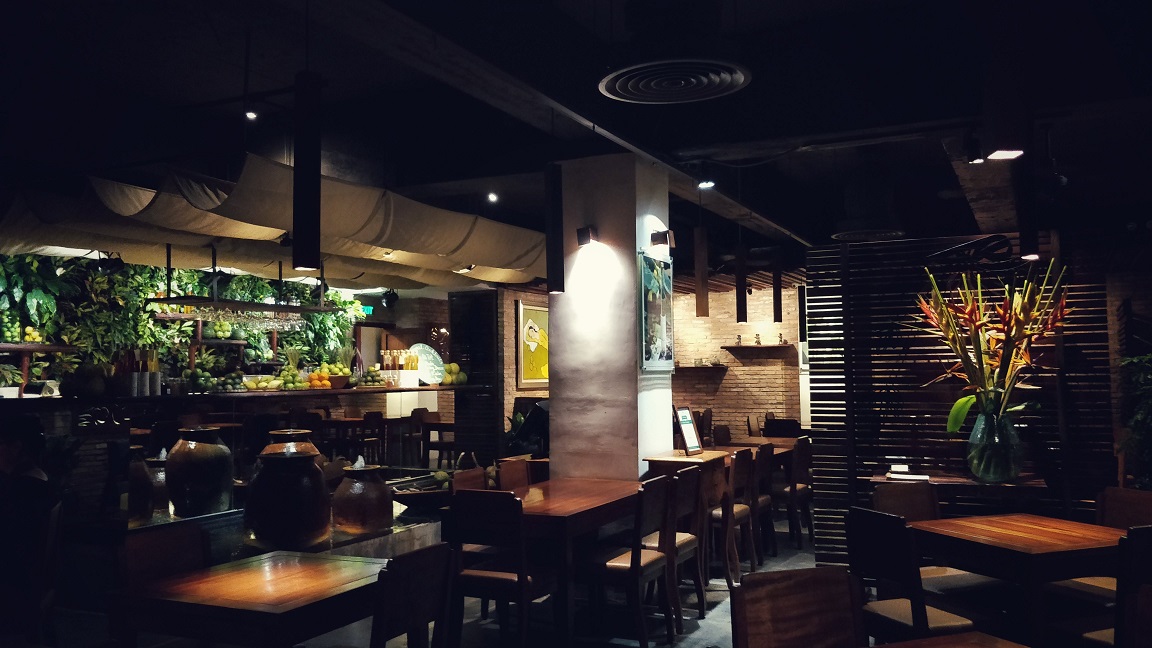Asian Restaurant ISB: A Must-Try Area for Food Lovers in Islamabad
Wiki Article
Savor Genuine Asian Cuisine With a Pan-Asian Spin for a Cooking Journey
Starting a cooking journey with genuine Oriental cuisine, boosted with a Pan-Asian twist, supplies a special possibility to explore the abundant tapestry of tastes that define the region's varied culinary customs. This experience invites you to relish the elegant balance of tastes-- pleasant, salted, spicy, and sour-- balanced by aromatic natural herbs and flavors. Think of the cutting-edge fusion of Thai curry and ramen or the unanticipated pleasure of sushi burritos. As you ponder these attracting dishes, think about the cultural narratives and historic influences that shape them, each bite using a story waiting to be uncovered.Discovering Pan-Asian Flavors
In the realm of global gastronomy, Pan-Asian cuisine sticks out for its impressive variety and the harmonious interaction of flavors from different Asian cultures. This culinary technique celebrates the abundant practices and special active ingredients located throughout the continent, developing a tapestry of preferences that is both satisfying and intriguing. Secret to Pan-Asian food is its capacity to stabilize different flavors-- pleasant, salty, spicy, and sour-- while highlighting the quality and quality of each ingredient.From the umami-rich soy sauce of Japan to the intense chili peppers of Thailand, Pan-Asian cuisine uses a considerable palette of flavors. These aspects are typically integrated in inventive methods, boosting recipes with layers of complexity. For example, the use of aromatic natural herbs such as lemongrass and cilantro, typical in Vietnamese and Thai cuisine, adds a rejuvenating brightness to meals, while the consolidation of coconut milk delivers a creamy, rich structure.
The emphasis on fresh fruit and vegetables and fragrant flavors makes certain that each dish is not only a feast for the taste however likewise for the senses. Pan-Asian food welcomes diners to get started on a culinary journey, exploring the substantial and varied landscapes of Eastern gastronomy with every bite.
Fusion Recipes to Try
While Pan-Asian food is celebrated for its traditional flavors, the modern-day cooking landscape is progressively embracing fusion dishes that mix these traditional elements with influences from other areas. This ingenious approach not only honors the abundant heritage of Oriental cooking arts yet likewise introduces unique preference experiences that appeal to modern tastes buds.
A prime example of such a fusion meal is the Korean-Mexican taco, where seasoned bulgogi beef is wrapped in a cozy tortilla, topped with kimchi and a hot gochujang-infused salsa. This mix weds the bold, mouthwatering flavors of Korea with the vibrant, fresh components of Mexican food. Likewise, sushi burritos have gained popularity, integrating the delicate creativity of Japanese sushi with the hearty, hand-held comfort of a burrito, often including combination components like tempura shrimp and avocado with a drizzle of wasabi mayo.
Another noteworthy meal is Thai curry ramen, which instills the velvety, fragrant spices of Thai curry right into the reassuring broth of traditional Japanese ramen, creating a harmonious mix that tantalizes the senses. These fusion recipes expand past plain novelty; they stand for a culinary discussion between societies, motivating expedition and advancement in the world of Pan-Asian cuisine.
Necessary Components and Seasonings
To absolutely value Pan-Asian cuisine, one should understand the important ingredients and seasonings that form its foundation. This diverse cooking design attracts from a rich tapestry of Eastern practices, employing a harmonious blend of appearances and flavors. Trick ingredients include Click Here soy sauce, fish sauce, and oyster sauce, which present a full-flavored umami deepness vital to Eastern dishes. Corresponding to these are rice vinegar and mirin, providing a delicate level of acidity and sweetness.Fragrant components are essential, with lemongrass, ginger, and garlic being common throughout various Pan-Asian dishes. These active ingredients provide a great smelling base that enhances the intricacy of tastes. Spices such as star anise, cardamom, and cinnamon present heat and personality, resembling influences visit site from areas like China and India.

Cooking Methods and Tips
Understanding the art of Pan-Asian cuisine needs knowledge with its distinctive food preparation techniques, each contributing to the lively tapestry of tastes this cooking custom is celebrated for. Central to these approaches is the stir-fry, a quick cooking method that maintains the nutritional honesty and vibrant colors of active ingredients. Making use of a wok, the stir-fry technique permits also warmth distribution, vital for achieving the characteristic appearance and taste equilibrium of Pan-Asian dishes.Another basic method is steaming, specifically common in Chinese cuisine. This gentle method maintains the all-natural flavors and nutrients of components, making it ideal for fish and shellfish and veggies. Dumplings, a cherished staple, typically benefit from steaming, resulting in soft, succulent structures.
Cooking, also indispensable, gives great smoky depths to dishes such as Korean bulgogi or Japanese yakitori (asian fusion restaurant). This strategy typically entails marinating components, allowing flavors to penetrate deeply before food preparation over an open fire or warm plate
Finally, grasping the art of balancing flavors-- wonderful, sour, salted, bitter, and umami-- is essential. Appropriately layering these components can raise a meal from ordinary to extraordinary, using a facility and pleasing cooking experience that personifies the significance of Pan-Asian food.
Dining Experiences Worldwide
Throughout the globe, Pan-Asian cuisine supplies an exceptional dining experience, commemorated for its abundant tapestry of flavors and dynamic presentations. This cooking phenomenon has gone beyond social boundaries, capturing the hearts and tastes buds of food lovers worldwide. In cosmopolitan cities like New York, London, and Sydney, Pan-Asian restaurants work as melting pots where culinary practices from Thailand, Japan, China, and past converge, providing diners with an eclectic mix of meals that highlight the area's diversity.The worldwide charm of Pan-Asian cuisine hinges Click Here on its capability to offer both credibility and development. Chefs skillfully marry traditional components such as lemongrass, soy sauce, and miso with modern strategies, leading to dishes that are both refreshingly brand-new and familiar. This blend allows diners to start a cooking trip that appreciates heritage while welcoming modernity.
In addition, dining experiences are elevated via attentively created atmospheres that reflect the values of Pan-Asian visual appeals. From minimal Japanese-inspired insides to vibrant Thai-themed areas, each dining establishment offers a special ambiance that enhances the culinary offerings. Because of this, patrons are not simply eating a meal however partaking in a cultural experience, making Pan-Asian eating an absolutely global sensation.
Final Thought
The exploration of Pan-Asian cuisine offers a profound understanding of the elaborate interaction of tastes and culinary customs throughout Asia. By welcoming blend recipes such as Thai curry ramen and sushi burritos, the cooking journey not just highlights the versatility of typical ingredients but additionally showcases ingenious contemporary techniques. This gastronomic experience, enhanced by important spices and cooking methods, offers a special chance to appreciate the social variety and culinary creativity that specify Pan-Asian cuisine on a global range.Getting started on a culinary journey via genuine Oriental food, boosted with a Pan-Asian twist, offers an unique opportunity to check out the rich tapestry of flavors that define the region's varied cooking practices.In the world of worldwide gastronomy, Pan-Asian cuisine stands out for its amazing variety and the unified interaction of flavors from various Eastern societies. Trick to Pan-Asian food is its capability to stabilize different flavors-- wonderful, salted, spicy, and sour-- while highlighting the freshness and quality of each active ingredient.

Report this wiki page